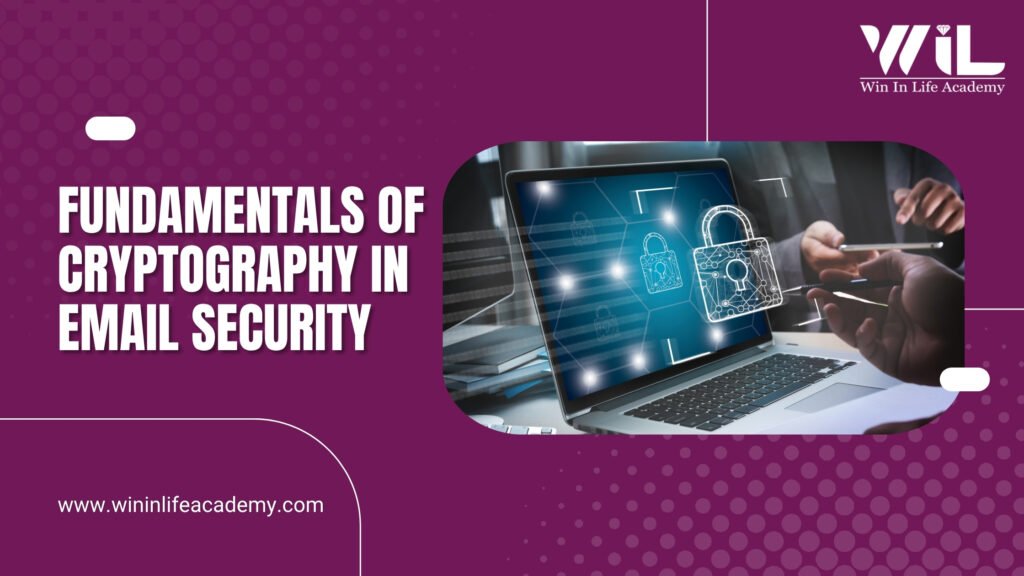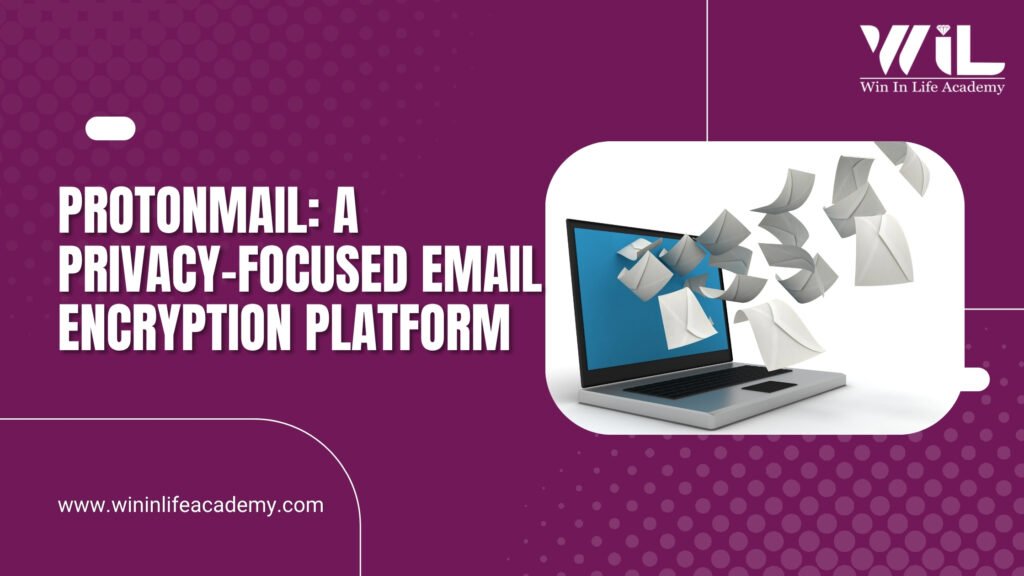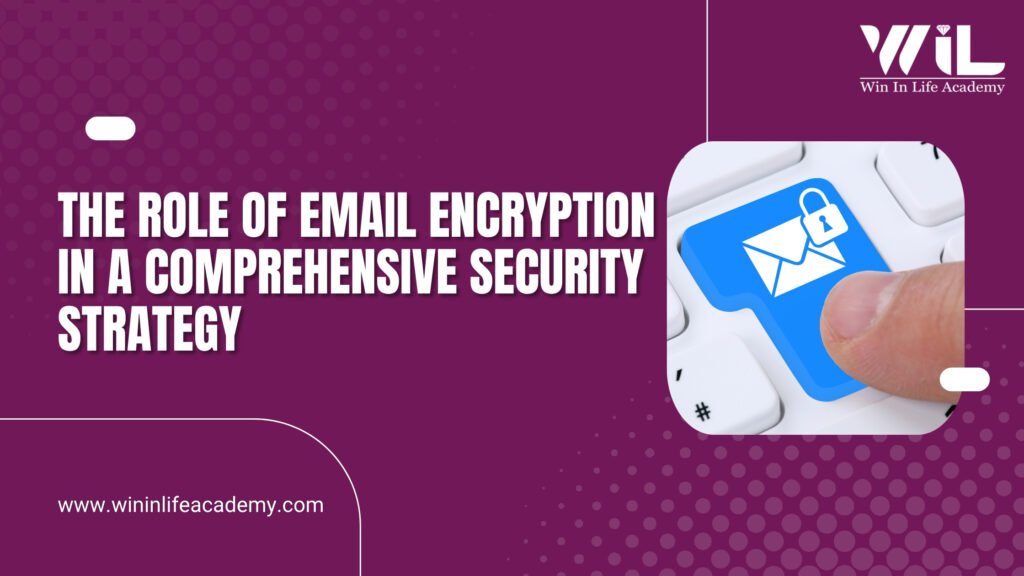In ethical hacking, understanding and implementing robust security measures is paramount. Among the various techniques to protect sensitive information, email encryption stands out as a critical defense mechanism. This comprehensive guide delves into the intricacies of email encryption from an ethical hacking perspective, exploring its fundamental principles, practical applications, and the significance of technologies like MIME and S MIME and platforms like ProtonMail. By mastering these concepts, ethical hackers can effectively assess vulnerabilities and implement secure communication strategies.
Enroll Now: Ethical Hacking Course
The Imperative Need for Robust Email Encryption Protocols
Email remains a primary mode of communication for both personal and professional exchanges in this digital landscape. However, the inherent nature of traditional email transmission leaves it susceptible to interception and unauthorized access. This vulnerability underscores the critical importance of employing email encryption techniques. For ethical hackers, a thorough understanding of these techniques is not merely academic; it’s an essential skill for conducting effective security assessments and recommending appropriate safeguards.
Imagine a scenario where sensitive business negotiations, confidential client information, or even personal details are transmitted over unencrypted email channels. Cyberattackers could potentially intercept these communications, leading to severe consequences such as financial losses, reputational damage, or privacy breaches. Email encryption acts as a digital shield, transforming readable email content into an unintelligible format that can only be deciphered by authorized recipients possessing the correct decryption key.
From an ethical hacking standpoint, recognizing the absence of inadequacy of email encryption protocols is a crucial finding during penetration testing and vulnerability assessments. By demonstrating the ease with which unencrypted emails can be intercepted, ethical hackers can effectively highlight the need for implementing robust encryption solutions.
Fundamentals of Cryptography in Email Security

At its core, email encryption leverages the principles of cryptography to secure email communications. Cryptography, the art and science of concealing information, involves transforming plain text into ciphertext using an encryption algorithm and a secret key. The recipient, possessing the corresponding decryption key, can then reverse this process to retrieve the original message.
There are primarily two types of cryptographic techniques employed in email encryption:
- Symmetric Encryption: This method uses the same key for both encryption and decryption. While it is generally faster, the challenge lies in securely sharing the key between the sender and the recipient.
- Asymmetric Encryption (Public-Key Cryptography): This more sophisticated approach utilizes a pair of keys: a public key and a private key. The public key can be freely shared and is used for encryption, while the private key is kept secret and is used for decryption. This eliminates the need for secure key exchange, making it particularly suitable for email communication.
Understanding these fundamental cryptographic concepts is crucial for ethical hackers. It allows them to analyze the strength of different email encryption methods and identify potential weaknesses in their implementation. For instance, an ethical hacker might assess the length and complexity of the cryptographic keys being used, as shorter or easily guessable keys can be vulnerable to brute-force attacks.
Exploring S MIME: A Foundation of Email Encryption
S MIME, which stands for Secure/Multipurpose Internet Mail Extensions, is a widely adopted standard for public key encryption and signing of MIME data. MIME and S MIME is an internet standard that extends the format of email messages to support text in character sets other than ASCII, as well as attachments to audio, video, images, and application programs. S MIME enhances this by providing cryptographic security for email messages.
S MIME in cryptography ensures the following key security features for email communication:
- Confidentiality: By encrypting the email content, MIME and S MIME ensures that only the intended recipient with the correct private key can read the message.
- Integrity: S MIME uses digital signatures to verify the sender’s identity and ensure that the email content has not been tampered with during transmission.
- Authentication: The digital certificate associated with an S MIME in cryptography signature provides a reliable way to authenticate the sender’s identity.
- Non-Repudiation: Because the digital signature is unique to the sender’s private key, it provides strong evidence that the sender indeed sent the email, preventing them from later denying it.
For ethical hackers, understanding S MIME is crucial because it is a commonly used email encryption method in corporate and organizational environments. When conducting security assessments, ethical hackers need to be able to verify the proper implementation and configuration of S MIME, including the validity and management of digital certificates.
They might also explore potential vulnerabilities associated with MIME and S MIME, such as weaknesses in the underlying cryptographic algorithms or misconfigurations that could be exploited. The concept of MIME and S MIME is fundamental here, as S MIME builds upon the MIME standard to add security features.
Decoding the Mechanics of S MIME in Email Communication
The process of using S MIME to encrypt and sign an email involves several steps:
- Certificate Acquisition: Both the sender and the recipient need to obtain digital certificates from a trusted Certificate Authority (CA). These certificates contain their public key and identifying information.
- Key Exchange: Before sending an encrypted email for the first time, the sender typically needs to obtain the recipient’s public key certificate. This can often be done by receiving a digitally signed email from the recipient.
- Encryption Process: When the sender composes an email and chooses to encrypt it using S MIME, their email client uses the recipient’s public key to encrypt the email content. Only the recipient’s corresponding private key can decrypt this message.
- Signing Process: To digitally sign an email using S MIME, the sender’s email client creates a cryptographic hash (a unique digital fingerprint) of the email content. This hash is then encrypted using the sender’s private key, creating the digital signature, which is attached to the email.
- Decryption and Verification: When the recipient receives an S MIME encrypted email, their email client uses their private key to decrypt the message. If the email is also signed, the recipient’s email client uses the sender’s public key (obtained from their certificate) to decrypt the digital signature and verify that the hash of the received email matches the decrypted hash, thus confirming the sender’s identity and the integrity of the message.
Ethical hackers need to be familiar with these steps to effectively analyze and test the security of S MIME implementations. They might look for scenarios where certificates are not properly validated, where older and potentially vulnerable versions of S MIME protocols are in use, or where private keys are not adequately protected.
ProtonMail: A Privacy-Focused Email Encryption Platform

While S MIME is a standard that can be implemented across various email clients, ProtonMail represents a different approach. It is an end-to-end encrypted email service that prioritizes user privacy and security. Unlike traditional email providers that may have access to the content of your emails, ProtonMail encrypts emails on its servers in a way that even they cannot read them.
Here’s how ProtonMail achieves its strong encryption:
- End-to-End Encryption: Emails are encrypted on the sender’s device before they are sent and decrypted on the recipient’s device. This ensures that the email content is protected throughout its journey and while stored on ProtonMail’s servers.
- Zero-Access Encryption: ProtonMail uses zero-access encryption, meaning that the encryption keys are managed by the user, not ProtonMail. This ensures that ProtonMail itself does not have the ability to decrypt user emails.
- Open-Source and Audited: ProtonMail‘s code is open-source and has undergone independent security audits, enhancing transparency and trust in its security claims.
For ethical hackers, ProtonMail is an interesting case study in secure email communication. While they may not be able to directly assess the internal workings of ProtonMail’s servers without authorization, they can evaluate its security features and how it compares to traditional email with S MIME implementation. Ethical hackers might also consider scenarios where ProtonMail could be used by threat actors and how organizations can detect and respond to such activity.
Comparative Analysis: S MIME vs. ProtonMail from an Ethical Hacking Perspective
Both S MIME and ProtonMail offer significant improvements over unencrypted email communication, but they have different strengths and weaknesses from an ethical hacking perspective:
| Feature | S MIME | ProtonMail | Ethical Hacking Considerations |
| Encryption Type | Primarily asymmetric (public-key) | End-to-end encryption (symmetric and asymmetric) | Evaluate the strength of the cryptographic algorithms and key lengths used by both methods. Assess potential vulnerabilities in key management and certificate validation for S MIME. For ProtonMail, focus on understanding the implications of zero-access encryption for forensic investigations. |
| Ease of Use | Can be complex to set up initially | Relatively user-friendly | Consider the user experience as a factor in adoption. Complex S MIME setups might lead to user errors and misconfigurations that could be exploited. ProtonMail’s ease of use might make it more readily adopted by users seeking secure communication. |
| Platform Support | Integrated into most major email clients | Web-based and dedicated mobile apps | Assess the security of different email clients’ S MIME implementations. Evaluate the security of ProtonMail’s web interface and mobile applications. Consider the potential for vulnerabilities in third-party integrations or browser extensions. |
| Key Management | User and/or organization manages certificates | ProtonMail manages keys on their secure servers | For S MIME, assess the security of certificate storage and private key protection on user devices or within organizational systems. For ProtonMail, evaluate the trust placed in their key management infrastructure. Consider the implications of lost private keys in both scenarios. |
| Cost | Typically, no direct cost (certificate fees) | Free and paid subscription options | Consider the cost implications for organizations when choosing an email encryption solution. Evaluate whether cost might be a barrier to adoption for certain users. |
| Metadata | Subject line and sender/receiver visible | Sender/receiver sometimes obfuscated for ProtonMail users | Analyze the metadata associated with encrypted emails. While the content might be protected, metadata can still reveal valuable information to attackers. Understand how ProtonMail attempts to minimize metadata leakage. |
Ethical hackers should be able to critically evaluate these differences and recommend the most appropriate email encryption solution based on the specific needs and context of an organization or individual.
The Role of Email Encryption in a Comprehensive Security Strategy

Email encryption, whether implemented through S MIME or a platform like ProtonMail, is not a silver bullet for all security threats. It should be considered as one crucial component of a comprehensive security strategy that also includes:
- Strong Passwords and Multi-Factor Authentication: Protecting email accounts with strong, unique passwords and enabling multi-factor authentication is essential to prevent unauthorized access in the first place.
- Email Filtering and Anti-Spam Solutions: These technologies help to prevent malicious emails, including phishing attempts and malware distribution, from reaching users’ inboxes.
- Employee Training and Awareness: Educating users about email security best practices, such as identifying phishing emails and avoiding suspicious attachments, is critical in mitigating human error.
- Regular Security Audits and Vulnerability Assessments: Conducting periodic security audits and vulnerability assessments, including testing email encryption implementations, helps to identify and address potential weaknesses.
- Data Loss Prevention (DLP) Tools: DLP solutions can help to prevent sensitive information from being inadvertently or intentionally sent via unencrypted email.
Ethical hackers play a vital role in helping organizations develop and implement comprehensive security strategies. By understanding the strengths and limitations of email encryption and how it fits into the broader security landscape, they can provide valuable guidance and recommendations.
Practical Applications and Ethical Considerations for Ethical Hackers
Ethical hackers utilize their knowledge of email encryption in various ways:
- Vulnerability Assessment: They test the robustness of existing email encryption implementations, looking for weaknesses in configuration, key management, or the underlying cryptographic algorithms.
- Penetration Testing: During penetration tests, ethical hackers might attempt to intercept email communications to demonstrate the risks of unencrypted transmissions and the effectiveness of implemented encryption.
- Security Awareness Training: Ethical hackers can educate users about the importance of email encryption and how to use it effectively, promoting a security-conscious culture within an organization.
- Forensic Investigations: In the event of a security incident, ethical hackers with expertise in email encryption can help to analyze compromised email communications and potentially recover encrypted data.
However, ethical hackers must always operate within legal and ethical boundaries. They should never attempt to decrypt emails without explicit authorization. Their goal is to identify vulnerabilities and recommend improvements, not to gain unauthorized access to sensitive information.
Final Thoughts
Email encryption is a tool in the arsenal of ethical hackers and a fundamental requirement for secure digital communication in today’s world. Understanding the principles of cryptography, the intricacies of S MIME, and the benefits of privacy-focused platforms like ProtonMail equips ethical hackers to effectively assess and enhance email security. By advocating for the adoption of robust email encryption protocols and integrating them into comprehensive security strategies, we can collectively work towards a more secure digital future.
Ready to deepen your expertise in ethical hacking and master the critical skills needed to safeguard digital communications?
Visit Win in Life Academy to explore our comprehensive courses and empower yourself with the knowledge to excel in the dynamic field of cybersecurity.
References
What Is Email Encryption?
https://www.fortinet.com/resources/cyberglossary/email-encryption
What is email encryption?
https://www.cloudflare.com/en-in/learning/email-security/what-is-email-encryption
Email Encryption
https://www.zoho.com/mail/glossary/what-is-email-encryption.html





